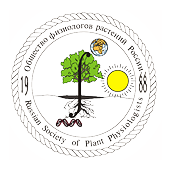Новости науки и практики // Июнь 2023

Gibberellin transport affects (lateral) root growth through HY5 during Far-Red light enrichment
Plants compete for light by growing taller than their nearest competitors. This is part of the shade avoidance syndrome and is a response to an increase of Far-Red light (FR) reflected from neighboring leaves. The root responds to this shoot-sensed FR cue by reducing lateral root emergence. It is well-established that the plant hormone Gibberellic Acid (GA) is involved in supplemental FR-induced shoot elongation. Although GA is also transported from shoot to root, its role in regulating lateral root growth is unclear. van Gelderen et al. show via GA manipulations, both chemical and genetic, that GA modulates the lateral root reduction induced by shoot-sensed FR enrichment.
https://www.biorxiv.org/content/10.1101/2023.04.21.537844v1.full.pdf
Long non-coding RNAs of plants in response to abiotic stresses and their regulating roles in promoting environmental adaptation
Yang et al. discuss the recent progress of plant lncRNAs, outlining their features, evolution, and functions of plant lncRNAs in response to drought, low or high temperature, salt, and heavy metal stress. The approaches to characterize the function of lncRNAs and the mechanisms of how they regulate plant responses to abiotic stresses were further reviewed.
https://www.mdpi.com/2073-4409/12/5/729?utm_source=substack&utm_medium=email
Single-cell adaptations shape evolutionary transitions to multicellularity in green algae
Cornwallis et al. experimentally examine how key environmental factors (predation, nitrogen and water turbulence) combine to influence multicellular group formation in 35 wild unicellular green algae strains.
https://www.nature.com/articles/s41559-023-02044-6?utm_source=substack&utm_medium=email
The integration of reactive oxygen species (ROS) and calcium signalling in abiotic stress responses
This review discusses the proteins that may serve as nodes or connecting bridges between the different pathways during abiotic stress responses, highlighting the crosstalk between ROS and Ca2+ pathways in cell signalling. Ravi et al. consider putative molecular switches that connect these signalling pathways and the molecular machinery that achieves the synergistic operation of ROS and Ca2+ signals.
https://onlinelibrary.wiley.com/doi/10.1111/pce.14596?utm_source=substack&utm_medium=email
Researchers find new mechanism for sodium salt detoxification in plants
A high content of sodium-containing salts in the soil is a problem for many plants: as a result, they grow less well, or not at all. Soil salinisation is seen as one of the greatest threats to being able to feed the world’s population because it makes soils increasingly infertile, especially in dry regions. A team of Chinese, German and Spanish researchers, including Prof Jörg Kudla and his team from the University of Münster (Germany), has now found a mechanism in thale cress (Arabidopsis thaliana) which enables plants to provide protection against salt stress for their sensitive stem cells in the meristem at the root tip. The meristem, which ensures that the root constantly forms new cells and can thus grow, is particularly sensitive: in contrast to fully formed plant cells, its cells have no vacuole inside where harmful substances can be disposed of.
https://www.eurekalert.org/news-releases/990135
Precise integration of large DNA sequences in plant genomes using PrimeRoot editors
A technique for chromosomal insertion of large DNA segments is much needed in plant breeding and synthetic biology to facilitate the introduction of desired agronomic traits and signaling and metabolic pathways. Sun et al. describe PrimeRoot, a genome editing approach to generate targeted precise large DNA insertions in plants.
https://www.nature.com/articles/s41587-023-01769-w?utm_source=substack&utm_medium=email
How plants use sugar to produce roots
Heidelberg biologists identify the molecular mechanism that controls root branching.
https://www.eurekalert.org/news-releases/990000
Parallel evolution of cannabinoid biosynthesis
Berman et al. explored Helichrysum umbraculigerum, an Asteraceae species unrelated to Cannabis sativa that produces Cannabis-type cannabinoids (for example, 4.3% cannabigerolic acid). In contrast to Cannabis, cannabinoids in H. umbraculigerum accumulate in leaves’ glandular trichomes rather than in flowers. The integration of de novo whole-genome sequencing data with unambiguous chemical structure annotation, enzymatic assays and pathway reconstitution in Nicotiana benthamiana and in Saccharomyces cerevisiae has uncovered the molecular and chemical features of this plant.
https://www.nature.com/articles/s41477-023-01402-3?utm_source=substack&utm_medium=email
Gibberellin and abscisic acid transporters facilitate endodermal suberin formation in Arabidopsis
Binenbaum et al. identify three NITRATE TRANSPORTER1/PEPTIDE TRANSPORTER (NPF) transporters required for GA and abscisic acid (ABA) translocation. They demonstrate that NPF2.14 is a subcellular GA/ABA transporter, presumably the first to be identified in plants, facilitating GA and ABA accumulation in the root endodermis to regulate suberization.
https://www.nature.com/articles/s41477-023-01391-3?utm_source=substack&utm_medium=email
A redundant transcription factor network steers spatiotemporal Arabidopsis triterpene synthesis
Plant specialized metabolites modulate developmental and ecological functions and comprise many therapeutic and other high-value compounds. However, the mechanisms determining their cell-specific expression remain unknown. Nguyen et al. describe the transcriptional regulatory network that underlies cell-specific biosynthesis of triterpenes in Arabidopsis thaliana root tips.
https://www.nature.com/articles/s41477-023-01419-8?utm_source=substack&utm_medium=email
Микробы делятся с деревьями антистрессовым опытом
Почвенная микрофлора помогает молодым деревьям приспособиться к нестандартным экологическим условиям.
https://www.nkj.ru/news/48150/
How Soybeans Offer Solutions for Nutrient-Stressed Agriculture
Unlocking how soybeans thrive in phosphorus-poor soils could revolutionise our approach to sustainable agriculture.
https://botany.one/2023/05/how-soybeans-offer-solutions-for-nutrient-stressed-agriculture/
Новости
Новости науки и практики // Апрель 2024
Обзор научных новостей, опубликованных во всемирной паутине за последний месяцФосфорилирование плазматической мембраны H+-АТФазы Thr881 (треонин) участвует в светоиндуцированном открывании устьиц
Ученые из Университета Нагои (Nagoya University) и Института трансформирующих биомолекул (WPI-ITbM) обнаружили новый ...Научная конференция «Photosynthesis and Hydrogen Energy Research for Sustainability – 2024»
Приглашаем Вас принять участие в XII международной научной конференции


Объявления
Записей не найдено.



